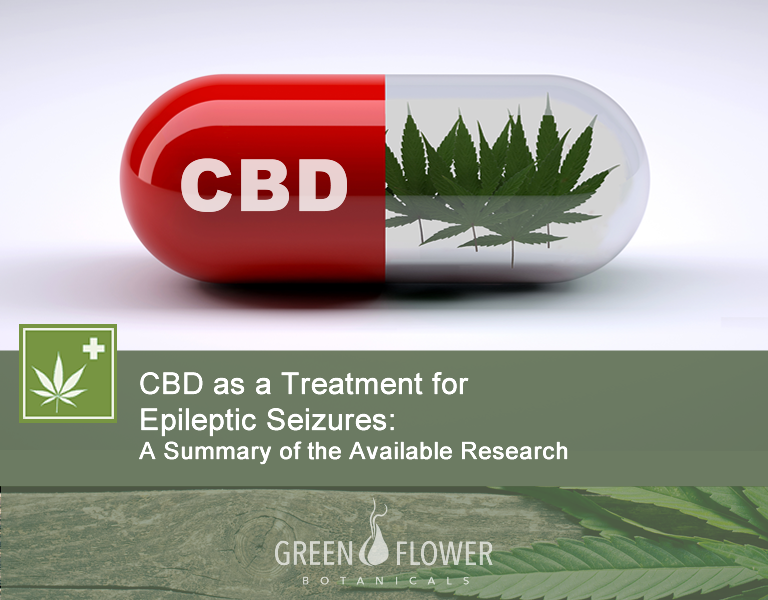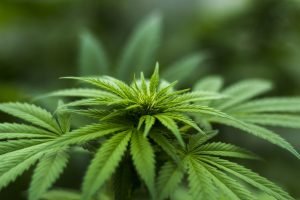
CBD as a Treatment for Epileptic Seizures: A Summary of the Available Research
The interest in CBD-based products for the treatment of drug-resistant epilepsy and other forms of seizure disorders have gone through the ceiling in recent years.
Unlike THC, which is utilized mostly for recreational purposes, and has been shown to have undesirable effects on patients with seizure disorders, CBD shows better anticonvulsant properties and is largely without any adverse effects. Over the years, therefore, researchers have used CBD-enriched extracts increasingly to treat seizure disorders, especially in pediatric patients. This article will discuss the existing research and range of evidence on the safety and efficacy of Cannabis, more specifically CBD, in the management of different types of seizures and epileptic syndromes.
A brief history of Cannabis use in treating epileptic seizures
The Cannabis plant originated in the foothills of the Himalayas and was initially grown for fiber and seed production in China and for producing resin in India. European and East Asian societies have also utilized this plant for centuries to produce fiber and food using strains containing less than 1% THC (hemp). The first recorded history of Cannabis being used for medicinal purposes goes all the way back to the Chinese Emperor Shen Nung in 2,700 B.C. There are also written records of medical applications of Cannabis to treat various ailments including “nocturnal seizures” among the Sumerian and Akkadian societies that date back to 1,800 B.C. In less ancient history, there exist Islamic and Arabic literature explicitly citing the use of Cannabis to treat epileptic seizures.
In more modern times, the first detailed description of cannabis-based extracts as an anticonvulsant was made by W.B. O’Shaughnessy, a Professor of Chemistry and Materia Medica in 1843. He studied the behavioral effects of various cannabis extracts on military assistants and healthy animal models, including fish, goats, sheep, cows, dogs, horses, swine, deer, crows, and monkeys. He tested the potential effects of the various extracts on different disorders, and reported extraordinary improvement in symptoms of a 40-day old infant suffering from recurrent convulsive seizures. Other researchers, such as Sir William Growers, took up his studies and also reported remarkable effectiveness of Cannabis indica against epileptic seizures resistant to bromide-based treatments his studies.
In the 20th century, the use of, and access to Cannabis decreased dramatically since the plant was made illegal in most countries. Nonetheless, scientific studies on the components of the plant progressed as researchers and pharmacologists studied the components of its active ingredients as well as the relationship between the plant’s molecular structure and molecular activity. Soon, it became apparent that THC limited the effectiveness of crude Cannabis preparations in reducing seizures. As a result, the focus shifted to the non-psychoactive components of Cannabis such as cannabidiol (CBD).
Although the studies on the effectiveness of CBD to treat epileptic seizures have been persistent over the years, meaningful clinical and pre-clinical studies have only been carried out in the past decade.
Chemistry and mechanism of action of Cannabis
The genus Cannabis refers to a flowering plant in the family Cannabaceae in which there exists three main species: Cannabis indica, Cannabis sativa and Cannabis ruderalis. These plants contain more than 100 active chemical compounds known as cannabinoids, with the most studied among these being THC and CBD. Generally, cannabis products extracted from the sativa family portray a higher CBD/THC ratio than products from the indica strains. Different Cannabis strains have been bred to either increase the THC content or to reduce it and increase CBD concentration.

CBD
Cannabinoids manifest many and complicated pharmacological characteristics. For instance, CBD possesses anticonvulsant, anti-anxiety, anti-inflammatory, analgesic, anti-tumorigenic, anti-emetic, immune-modulating and neuroprotective properties. According to studies, CBD has a low affinity for CB1 and CB2 cannabinoid receptors, compared to THC. Therefore, the molecular actions of CBD do not appear to come as a direct interaction with the receptors. That being said, researchers have not yet ascertained the precise mechanisms of action of CBD in observed anti-seizure activity.
In preclinical studies, researchers have established CBD to be active against a wide range of seizures in animal models, including those induced by; maximal electro-shock, pentylentetrazole, audiogenic seizures, as well as seizures induced by bicuculline, 3-mercaptopropionic acid, cocaine, picrotoxin, and isoniazid. Furthermore, CBD portrays protective properties for animal models with temporal lobe and focal seizures. Lastly, CBD has been found to inhibit the occurrence of seizures caused by free Mg2+ ions and 4-amino-pyridine in the hippocampus part of the brain.
CBD exhibits a range of other biological activities which suggest potential efficacy in treating other ailments such as: mood disorders, anxiety, psychosis, trauma-related conditions, inflammatory diseases, neurodegenerative disorders, addiction to tobacco and opioids as well as a tool for counteracting the adverse effects caused by THC.
CBDV
CBDV is another non-psychoactive cannabinoid derived from the cannabis plant which has gained a lot of interest due to its anticonvulsant properties. For instance, this compound shows protective activity against epileptic seizures induced by Mg2+ ions and 4-amino-pyridine. CBDV also protects against seizures stimulated by maximal electroshock, pentylentetrazole, and sound. Just like CBD, the anti-seizure effects manifested by CBDV do not seem to be as a result of its interaction with CB1 and CB2 receptors.
Evidence of the efficacy and safety of using CBD as a treatment for seizure disorders
Well-controlled clinical studies
CBD has gained a lot of popularity in the treatment of drug-resistant epilepsies due to its well-defined anticonvulsant profile as compared to THC. THC is associated with many undesirable effects, including possibility of addiction, impaired cognitive and motor function, cardiovascular toxicity, and even an increase in the frequency of seizures as seen in this small study.

Thanks to the recent increase in interest for CBD as a treatment for drug-resistant epilepsy, three well-controlled randomized trials have been successfully completed. These high-quality, double-blind studies tested the efficacy of a pure liquid form of CBD. In the first study that was published in the New England Journal of Medicine in May 2017, scientists were able to prove that CBD, combined with existing AED treatments reduces the occurrence of convulsive seizures in children and adolescents with Dravet-Syndrome.
The other two well-controlled, double-blind studies focused on patients with Lennox Gastaut syndrome. Although both have been completed, the results have only been published in summary form as of yet. In a nutshell, however, the two trials show that CBD is effective in reducing the occurrence of drop seizures compared to placebo in patients with Lennox Gastaut syndrome at dosages of 10-20mg/kg/day.
Studies involving the use of purified cannabidiol in treating epileptic seizures
Initial studies involving pure forms of CBD in treating drug refractory epilepsies can be traced back to the 70s and 80s where they explored the effects of oral dosages ranging between 200-300 mg/day. All the four studies carried out in this period included a placebo as a control. However, they were limited since only one of them was actually double-blind. Other shortcomings included a small sample size with the largest group consisting of 15 subjects only, lack of critical details among other methodological limitations.
According to a Cochrane review, which evaluated all the four trials plus other material, published up to September 2013, the authors resolved that the results regarding the efficacy of CBD in treating different forms of epilepsy was inconclusive. The Guideline Development Subcommittee of the American Academy of Neurology reached a similar conclusion in a comparable neurological report in 2014.
Interestingly, the largest study on CBD’s tolerability and anti-seizure action was published in 2016 and involved 11 epileptic centers in the USA. In this open-label interventional trial, 214 patients aged between 1-30 years old and suffering from some sort of severe and drug-resistant seizure disorder received 99% pure oil-based CBD formulation. The initial dose was 2-5mg/kg/day and was increased until the patient showed intolerance or when the dose reached a maximum of 25mg/kg/day or 50mg/kg/day depending on the site of the study. Tolerance and safety of the formulation was analyzed in 137 patients who underwent the therapy for at least 12 weeks. Among the group, 33 subjects suffered from Dravet syndrome and 31 had Lennox-Gastaut syndrome.
After starting the CBD therapy, there was a 35% average decrease in the frequency of seizures with patients with focal and atonic seizure reporting the greatest improvement. Nine patients (7%) of the total sample reported complete freedom from seizures during the last month of the follow-up period. It is important to note that there was reduction in motor seizures by more than 50% in patients who were taking the CBD therapy together with clobazam compared to only 27% of those who were not on clobazam.
After additional data analyses, the researchers noted that 32 patients with Dravet syndrome had an average of 43% reduction in seizures while the 30 subjects who had Lennox-Gastaut syndrome showed a mean improvement of symptoms by 36%.
In a subgroup of children evaluated from the same sample to determine the quality of life, CBD therapy was associated with better performance in memory, cognitive functions, fatigue, control, mood, social behavior and overall improvement in quality of life.
The group also reported several adverse effects, the most cited being somnolence (25%), reduced appetite and diarrhea (19%), fatigue (13%) and convulsions (11%).
Outcome data from a larger sample in the same program composed of children and adolescents with various epileptic disorders, including 44 with Dravet syndrome and 40 with Lennox-Gastaut syndrome. The results showed a 48% mean reduction of convulsive seizures in the whole group while atonic seizures for patients with Lennox-Gastaut syndrome reduced by a whopping 71.1%.
In general, the main value of these studies is to provide the data needed to create a profile of CBD’s safety as a treatment for seizure disorders. Data regarding to seizure reduction are difficult to evaluate owing to the uncontrolled manner in which the observations are made.
There are more, smaller studies that suggest that CBD could be beneficial in treating other drug refractory seizures. These include
- Seizures associated with tuberous sclerosis complex
- Malignant migrating partial seizures in infancy
- Febrile infection-related epilepsy syndrome (FIRES),
- Refractory seizures in Sturge-Weber syndrome
Surveys and anecdotal reports of cannabis as a treatment for epilepsy
Proof concerning the safety and efficacy of CBD in treating seizure disorders is mostly based on case reports and surveys of subjects who have received treatment from oral cannabis derivatives. One of the best examples is the much publicized story of Charlotte, a girl diagnosed with SCN1A-Dravet syndrome who saw extraordinary reduction in seizures after being placed on a CBD-enriched medication regimen.
One web-based study was directed to a group of 150 parents in the USA via Facebook, who had approved the use of CBD to treat drug-resistant seizures in their children. Only 19 out of the 150 parents with children who were diagnosed with either Dravet or Doose syndrome responded. Even though the sample was possibly biased, over 80% of the parents reported that their children had fewer seizures while undergoing treatment with CBD-enriched products at approximate dosages of up to 25mg/kg/day. They also stated other beneficial effects, including improved mood, sleep and focus. Some of the parents reported side effects such as fatigue and sleepiness.
Another similar online survey targeted parents with children using CBD-enriched products to treat epilepsy. Out of the 117 respondents including 53 with children suffering from infantile spasms and Lennox-Gastaut syndrome, 85% reported a reduction in the frequency of seizures and 14% stated that the seizures disappeared completely. The therapy lasted an average of 6.8 months with a mean dosage of 4.3mg/kg/day. Most of the respondents also reported other benefits such as improved sleep, mood and focus.
In a very recent online survey in Australia which focused on patients suffering from epilepsy, 137 out of the 976 respondents confirmed to be using or having previously used some form of cannabis product to manage their seizures. Patients who had used these products also showed a history of having tried numerous epileptic medication in the past. This suggests that patients with the highest drug resistance tend to turn more to cannabis as a possible therapy. According to the report, cannabis products were helpful in managing epileptic symptoms in 71% of children and 89.5% of adults. Fascinatingly, only 6.5% of the participants reported to use cannabis because of recommendation from their doctor. Furthermore, the majority of the products used were acquired from illegal suppliers and their chemical composition was unknown.
Besides web-based surveys, several published reports based on chart reviews have shed some light on the efficacy of CBD in treating epilepsy. For instance, a USA report that studied 272 children and adults with numerous seizure disorders reported reduction of symptoms in 55% of the subjects and 10% experienced complete freedom from seizures. In the review, there was no proof that some specific seizure types were affected more than others.
In Colorado, where use of medical marijuana is legal, a third of 75 children and adolescents suffering from drug-resistant epilepsy reported reduction in seizures by more than 50% after beginning oral cannabis therapy. Those with Lennox-Gastaut syndrome reported the highest apparent benefit. There were also reports of other valuable effects such as improved focus and behavior. Almost a half of the participants reported some sort of side effect, including increased seizures (13%) and fatigue (12%).
A comparable report from Colorado also showed similar findings derived from data collected from 119 epileptic patients. In this study, 24% of the respondents indicated more than 50% reduction in their seizure frequency and interestingly, a third of the subjects proceeded with their cannabis therapy even without improvement in seizure frequency. Probably due to other supposed benefits. On average, the group underwent cannabis treatment for 11.7 months, however, 71% of the patients dropped out of the study before its completion.
Lastly, a report from Israel focused on 74 patients with highly drug refractory seizure disorders. The group was treated with 1-20mg/kg/day dose using an oil product containing both CBD and THC in a 20:1 ratio respectively. In the results, approximately half of the participants reported reduction of seizures by more than 50%. However, 5% reported more seizures and withdrew from the treatment. As in the other reports, most of the subjects also cited improved sleep, behavior/mood, focus, communication and motor skills.
Conclusion
After almost four millennia of use in the treatment of epileptic seizures, we have never been so close to obtaining conclusive proof of both the safety and efficacy of using CBD in treating some severe, drug-resistant forms of seizures. Evidence regarding to the potential anti-seizure effects of CBD have reached new heights, especially in the past 12 months with the completion of the first, high-quality, placebo-controlled studies using a purified form of liquid cannabidiol. These three studies prove without a doubt that CBD is beneficial in reducing the frequency of seizures in patients with Dravet and Lennox-Gastaut syndrome.
For an indexed list of research abstracts go to our research page on CBD as a treatment for epilepsy and seizures.

